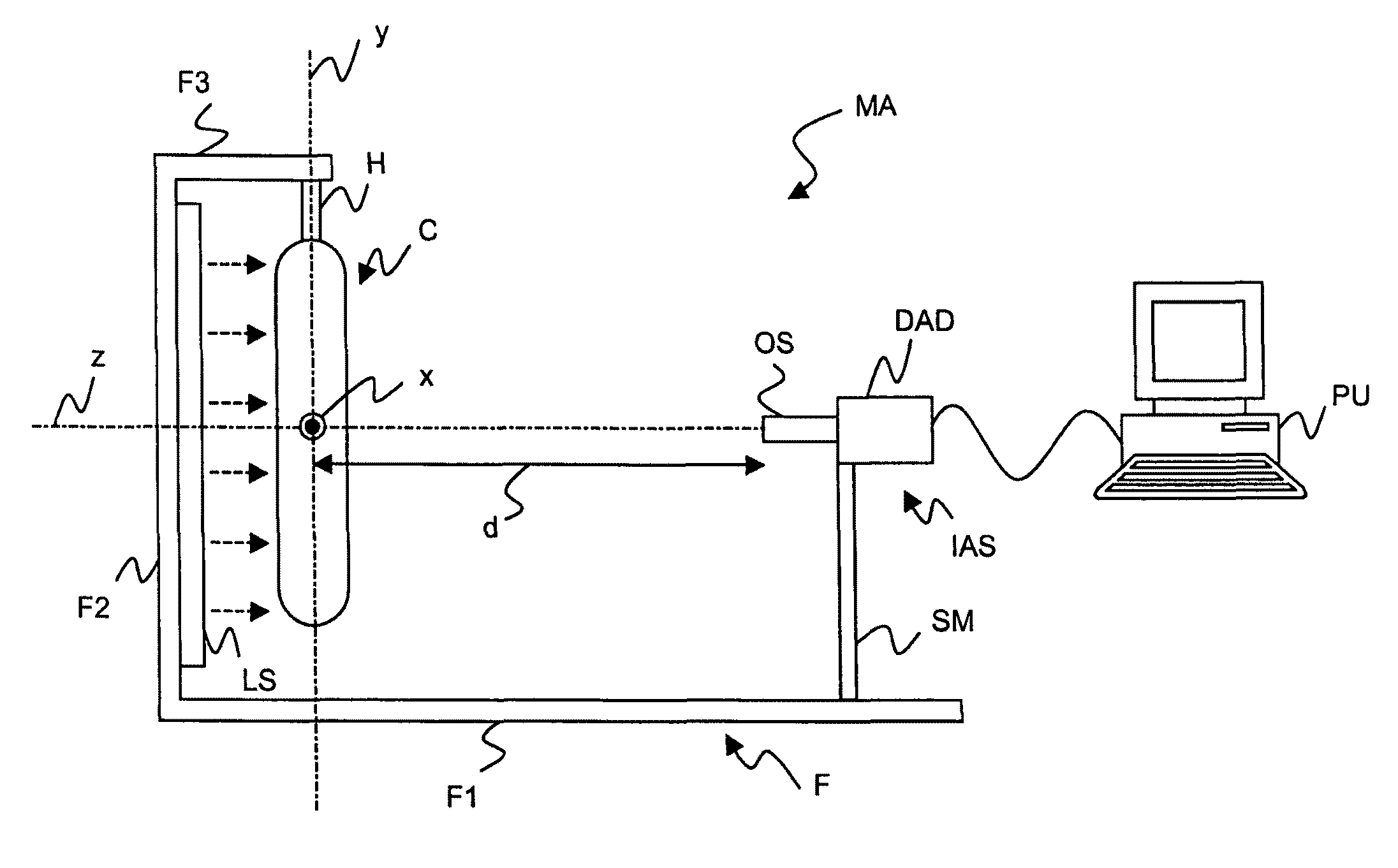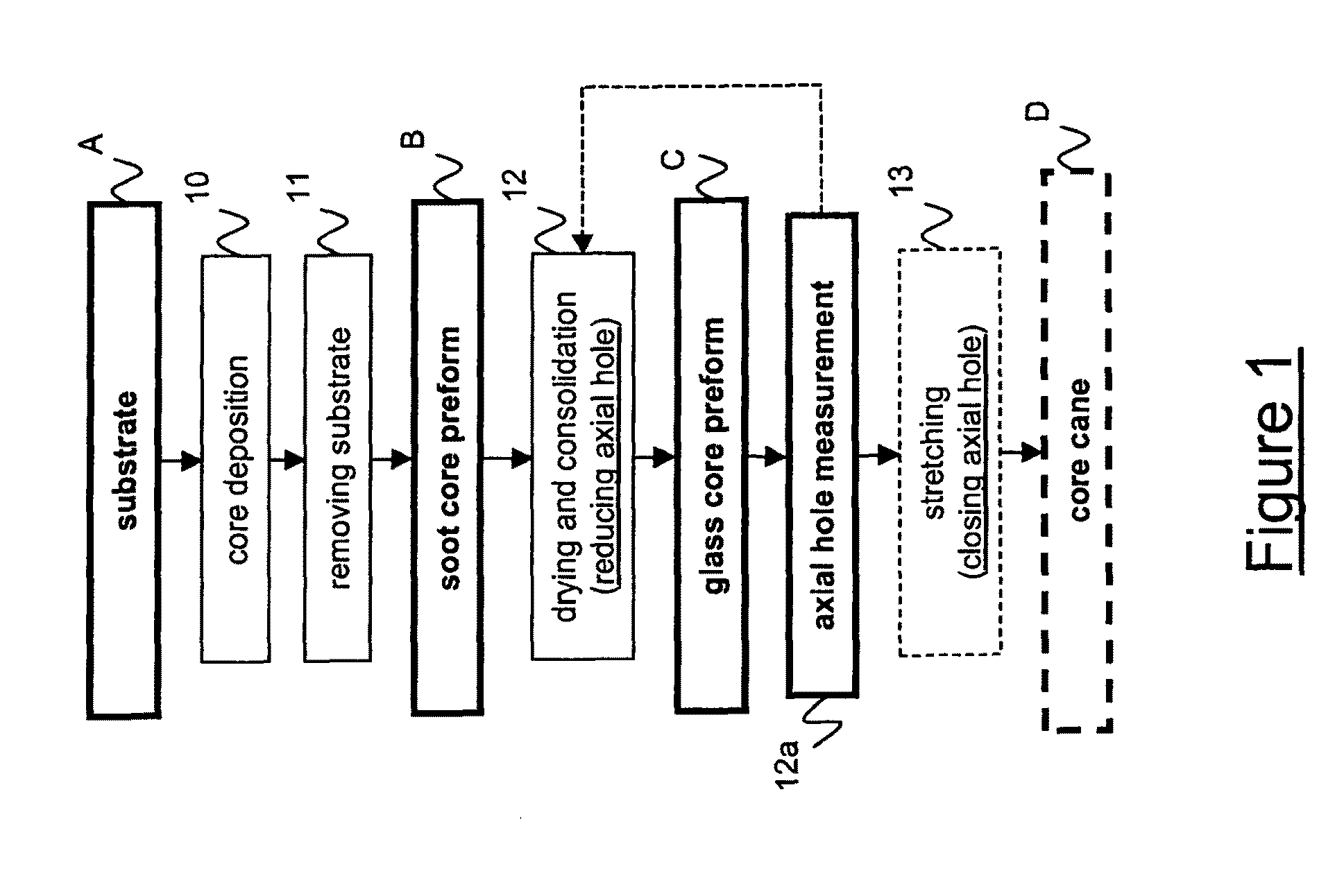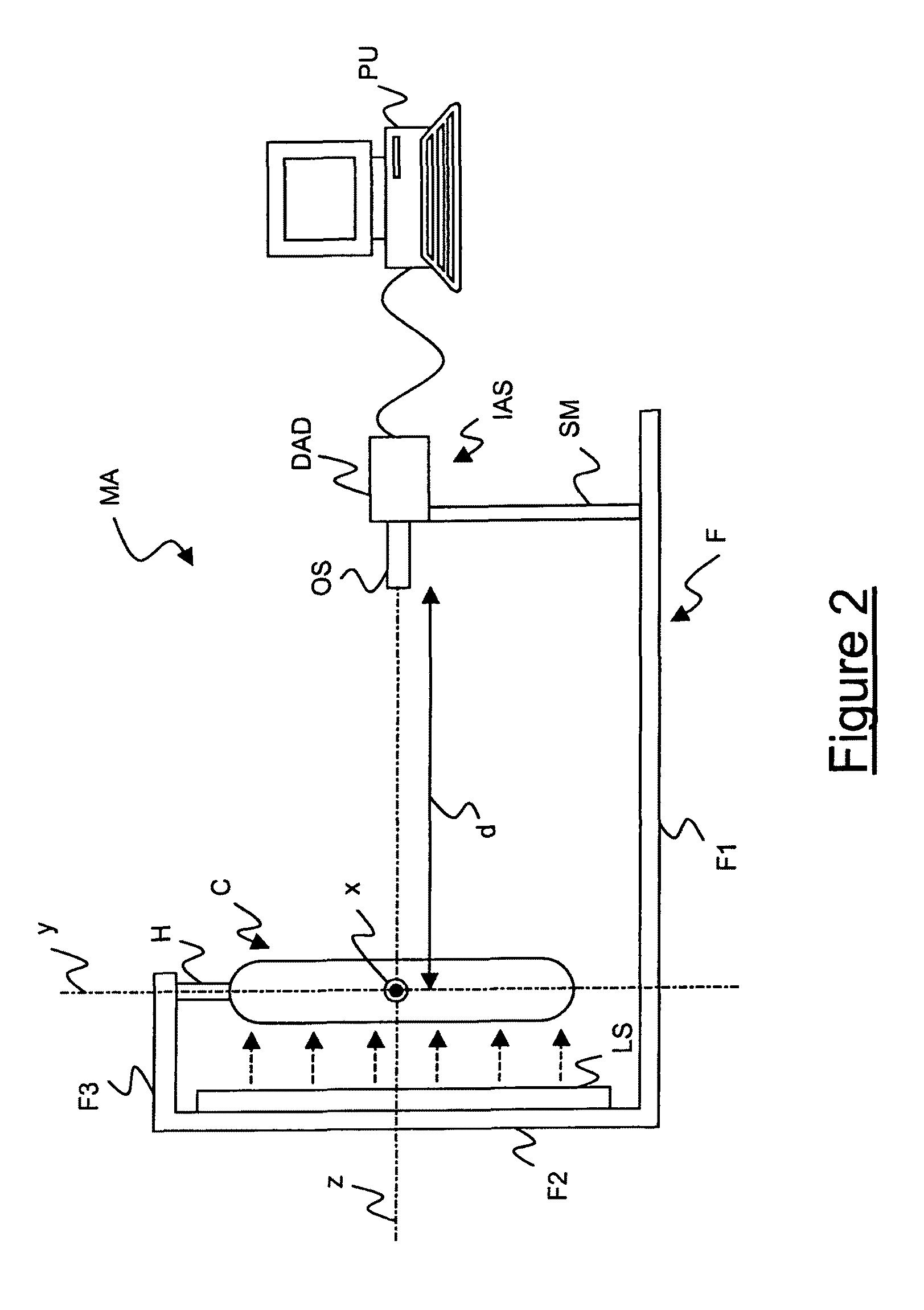Process for manufacturing a low-attenuation optical fiber
a manufacturing process and low-attenuation technology, applied in the direction of glass making apparatus, instruments, material analysis, etc., can solve the problems of attenuation of optical fibers, premature closure of holes, and gradual reduction of power of optical signals propagating along optical fibers
- Summary
- Abstract
- Description
- Claims
- Application Information
AI Technical Summary
Benefits of technology
Problems solved by technology
Method used
Image
Examples
Embodiment Construction
[0064]FIG. 1 schematically shows a flow chart including the steps for providing a core cane in a process for manufacturing an optical fiber, specifically a low-attenuation optical fiber. Said process comprises a core deposition step (step 10) wherein a core layer is laid down on a cylindrical substrate A. During the core deposition step a plurality of chemical substances, typically comprising oxides of silica and germanium, is deposited on the substrate A by using an OVD apparatus. The substrate is typically a rod. The rod is preferably made from glass or Alumina. The substances deposited onto the substrate form the core and the inner cladding portion. During the core deposition step, the reactant flow may be varied (in particular, germanium concentration is typically decreased in time) so as to obtain a predetermined refractive index profile. In particular, by controlling the reactant flow it is possible to obtain a desired ratio between core radius and external radius of the core ...
PUM
| Property | Measurement | Unit |
|---|---|---|
| aspect ratio | aaaaa | aaaaa |
| aspect ratio | aaaaa | aaaaa |
| wavelengths | aaaaa | aaaaa |
Abstract
Description
Claims
Application Information
 Login to View More
Login to View More - R&D
- Intellectual Property
- Life Sciences
- Materials
- Tech Scout
- Unparalleled Data Quality
- Higher Quality Content
- 60% Fewer Hallucinations
Browse by: Latest US Patents, China's latest patents, Technical Efficacy Thesaurus, Application Domain, Technology Topic, Popular Technical Reports.
© 2025 PatSnap. All rights reserved.Legal|Privacy policy|Modern Slavery Act Transparency Statement|Sitemap|About US| Contact US: help@patsnap.com



